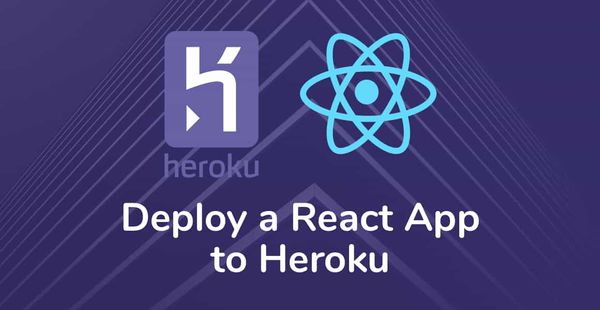Everything you should know about MVP software development
Software development can be a challenging task that involves many unknowns. Businesses are constantly striving to innovate and bring new products to market. However, developing a product or software without a clear plan can lead to costly mistakes, wasted resources, and failure in the market.
This is where Minimum Viable Product (MVP) development comes in. An MVP is a product with enough features to solve a problem and provide value to the users while still being simple and easy to use. MVP software development is a proven approach that allows businesses to test the waters with minimal risk and investment. This helps businesses save money, minimize risk, and launch their products faster than traditional software development methods.
Today we will provide you with a comprehensive guide on everything you need to know about MVP software development, from creating the perfect MVP to avoiding common mistakes and targeting the right market.
What is a Minimum Viable Product (MVP)?
A Minimum Viable Product (MVP) is a version of a product that has the minimum set of features required to test the product’s viability in the market. The goal of an MVP is to test the market with a functional product and receive feedback from early adopters.
MVP development allows startups and established businesses to validate their ideas before investing significant time and resources into developing a full-scale product. By following a structured approach, businesses can reduce the risk of failure, validate their ideas, and launch a successful product.
MVP software development vs. PoC vs. prototype
MVP, proof of concept (PoC), and prototype are three terms that are often used interchangeably, but they have distinct differences.
A Proof of Concept (PoC) is a demonstration that a certain concept or idea can be implemented. It's a way to validate the feasibility of an idea, but it's not a functional product. A PoC is often used to attract investors or stakeholders.
A prototype, on the other hand, is a working model of a product. It's used to test and validate the functionality and design of the product. A prototype is used to gather feedback from customers, but it's not a complete product.
Whereas MVP is a functional product with a minimum set of features required to test the product’s viability in the market and helps gather feedback for future development.
While all three concepts are crucial in software development, they serve different purposes and should not be used interchangeably.
Why should you invest in a Minimum Viable Product?
Before we dive into the nitty-gritty details of creating an MVP, let's first understand why it is essential to invest in an MVP in the first place. Here are a few reasons why:
Identify your core value proposition
One of the primary benefits of MVP development is that it allows you to identify your core value proposition. By focusing on the minimum set of features required to create a functional product, you can get to the heart of what your customers need and build the product accordingly. This helps you create a product tailored to meet the needs of your customers.
Gather valuable feedback
MVP software development allows you to get feedback from the market at an early stage. By launching a product with minimum features, you can get a sense of how it performs in the market and use that feedback to improve it. This feedback loop can help you create a product that is better suited to the needs of your customers.
Validate your business idea
An MVP allows you to test your business idea in the market. If the response is positive, you can move forward with the development process. If not, you can pivot or make changes to your idea without wasting too much time and resources.
Save time and resources
Developing an MVP is quicker and cheaper than building a full-fledged product. By focusing on the core functionality, you can avoid wasting time building features that are not essential. Not only this, an MVP is a cost-effective way of testing your product since you will not be investing in features that are not essential. This helps you minimize costs and maximize your return on investment.
Plan for future growth
MVP development allows you to plan your future growth. By testing your product in the market and getting feedback from your customers, you can determine how to scale your product in the future. This can help you create a roadmap for the growth and success of your product.
Attract investors
By testing your product in the market and getting feedback from your customers, you can demonstrate its potential for success. If your MVP is successful, it can attract investors who can help you scale your business.
How to create the perfect MVP
Creating an MVP is not rocket science, it just requires careful planning and execution. Here are the steps you should follow to create the perfect MVP:
Step 1: Identify your business idea
The first step in creating an MVP is to identify your business idea. What problem are you trying to solve? What is your unique selling proposition? What are your goals? You can start by brainstorming ideas, conducting market research, and talking to potential customers.
Step 2: Conduct market research
Market research is essential to validate your business idea. You need to understand your target market, the competition, and the trends in the industry. You can conduct surveys, interviews, and focus groups to gather valuable insights. This will help you build a product that resonates with your audience.
Step 3: Map out the user journey
The next step is to map out the user journey. You need to understand how your target audience will use your product, what features they need, and how they will interact with it. You can create user personas and user stories to guide your development process.
Step 4: Prototype a potential solution
Prototyping is an essential step in the MVP development process. You can use wireframes, mockups, or clickable prototypes to test your ideas and get feedback from users. It's a low-cost way to validate your ideas before investing in development.
Step 5: Choose the features to build
Choosing the right features is critical to the success of your MVP. You should focus on building the features that are essential to solving the problem and providing value to your users. Avoid feature creep and keep your product simple and easy to use.
Step 6: Keep iterating
Iterating is an ongoing process that should continue even after launching your MVP. You need to listen to customer feedback, track user behavior, and make improvements to your product. Continuous improvement is key to the success of your MVP.
Development mistakes to avoid while building an MVP
While building an MVP, there are a few mistakes you should avoid. Here are some of them:
Choosing the wrong problem to solve
Choosing the wrong problem to solve can result in a failed product. You need to conduct thorough market research to identify a real problem that requires a solution.
Skipping the prototype phase
Skipping the prototype phase can result in building a product that does not resonate with your target audience. Prototyping is essential to validate your ideas and get feedback from users before investing time and resources in development.
Targeting the wrong audience
Targeting the wrong segment of persona can result in building a product that does not meet the needs of your target audience. You need to conduct market research and identify the right segment to target.
Inappropriate development method
Choosing an inappropriate development method can lead to delays and cost overruns. You should choose the right development method based on your requirements and budget.
Confusion between qualitative and quantitative feedback
Confusing qualitative and quantitative feedback can result in misinterpreting the feedback from your target audience. You need to understand the difference between qualitative and quantitative feedback and use them appropriately.
Tips to target the right market while building an MVP
Targeting the right market is crucial for the success of your MVP. Here are some tips to help you target the right market:
Analyze the competition
Analyzing the competition can help you understand the market and identify gaps your product can fill. You can learn from the strengths and weaknesses of your competitors and build a better product.
Geographically segment the customer base
Geographically segmenting the customer base can help you understand regional differences in demand. This can help you build a product that meets the needs of your target audience.
Find the motivation behind a purchase
Understanding the motivation behind a purchase can help you build a product that resonates with your target audience. You must understand what motivates your users to buy your product and build features that cater to their needs. For example, if your product solves a time-consuming task, emphasizing the time-saving aspect can be a compelling selling point.
Wrapping up
The future of MVP software development looks promising, with more and more startups adopting this strategy to validate their business idea and test their products. With the rise of new technologies such as artificial intelligence and blockchain, MVP software development is likely to become even more efficient and cost-effective.
However, it is important to keep in mind that minimum viable product development is not a one-size-fits-all solution, and it requires careful planning and execution. By following the tips and strategies outlined in this guide, you can build the perfect MVP that meets the needs of your target audience and helps you achieve your business goals.
If you're looking to develop a Minimum Viable Product for your business, Logicwind can help you turn your idea into a reality. Our team of experienced developers and product managers can guide you through the entire MVP development process, from planning to launch. We can help you identify your core value proposition, plan and prepare your MVP, and launch it to the market. Contact us today to learn more about our MVP services and how we can help you build a successful MVP.
FAQs
Q: What should a Minimum Viable Product (MVP) include?
A: Minimum Viable Product should include only the core features that are essential to the product or service. It should be functional enough to provide value to early adopters and gather feedback to guide future development. Additional features can be added based on user feedback.
Q: How do I prepare for an MVP for my product?
A: To prepare for an MVP, you should start by identifying the core features that are essential to the product or service. Then, create a roadmap that outlines the development process, including timelines, milestones, and resources required. It's also essential to identify the target audience and develop a marketing strategy to reach them.
Q: What is the difference between a prototype and a Minimum Viable Product?
A: A prototype is a functional mockup of the final product that focuses on validating design and usability, while an MVP is a functional software product that tests the market and gathers feedback from users.
Q: How long should it take to build an MVP?
A: The time it takes to build an MVP depends on the product's complexity and the MVP service provider's expertise. Typically, it takes anywhere from a few weeks to a few months to build an MVP. Look for an MVP development company that has a proven record of success to avoid development delays.




